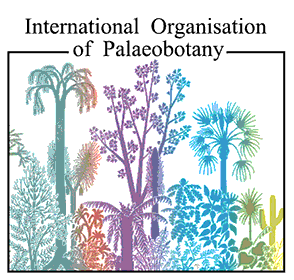An address presented at the 11th EPPC conference dinner Stockholm on 22 July 2022

The Jongmans Medal, an award for the life achievements of an outstanding palaeobotanist or palynologist was instituted in 1994 by a consortium of Dutch palaeobotanists and palynologists at the occasion of the 4th European Palaeobotany and Palynology Conference in Heerlen–Kerkrade. This award is named after the eminent Dutch palaeobotanist and stratigrapher Willem Josephus Jongmans (1878–1957), who served many years as director of the Geological Bureau in Heerlen, a division of the Geological Survey of the Netherlands in the heart of the former Dutch mining district. Jongmans published a large number of papers and several monographs on Carboniferous palaeobotany and stratigraphy. He was the initiator and long-time editor of the Fossilium Catalogus II – Plantae and organized the first two conferences on Carboniferous stratigraphy, held in Heerlen in 1927 and 1935.
Previous recipients of the Jongmans Medal are Winfried Remy (Heerlen, 1994), Maurice Streel (Kraków, 1998), Harald Walther (Athens, 2002), David Batten (Prague, 2006), Jean Galtier (Budapest, 2010), Bas van Geel (Padova, 2014) and Han van Konijnenburg-van Cittert (Dublin, 2018). In the EPPC session on emerging techniques, earlier today, this year’s award winner summarized her career in a brilliant way – much better than I can – highlighting adopting and applying new techniques, many of these are now standard methods in palaeobotany and palynology such as SEM, TEM and µCT-scan. She stressed how much especially young scientists can profit from attending conferences like EPPC and IOPC. During these conferences she found inspiration and met future cooperation partners. Her research interests are extremely broad and by implementing new techniques she bridged gaps between disciplines.
The Jongmans Medal winner started her career with William S. Lacey in Bangor, who advised her to go to London for a PhD under the supervision of William G. Chaloner. Her first publications with Chaloner, which both appeared in 1975, are an illustrated key to the commoner British Upper Carboniferous plant compression fossils and a paper on the application of SEM to a sigillarian impression fossil, but her PhD research was on Paleogene floras of England. Apart from well over 180 research papers and book chapters, she published a book on the fossil plants of the London Clay and co-authored a textbook on pollen analysis. Her work is novel and strongly interdisciplinary. Apart from palaeobotanical, palynological and palaeobiological studies, like her work on Paleogene fruits and seeds, palynology, megaspores and functional morphology, she published on biological self-assembly, plant taphonomy, plant-insect interactions, the evolution of the Paleogene and Neogene vegetation and terrestrial palaeoecosystems, palaeoclimate and global change across major boundaries. One of the plant groups that has her special attention are ferns, especially water ferns. In het talk earlier today, she confessed that Azolla is her favourite fossil plant. Her pioneering and innovative approach by combining palaeobotany with biomolecular palaeobotany, isotope geochemistry and organic geochemistry opened new directions within our discipline. She successfully cooperated with vertebrate palaeontologists, sedimentologists, coal scientists, archaeologists, isotope and organic geochemists, thus expanding our field. You name it, she did it. She is not only an innovative scientist but also a dedicated teacher. She supervised 10 MSc students, 19 PhD students an co-supervised 5 other PhD candidates and hosted three post-docs and one post-graduate researcher. She is a highly respected member of the palaeobotanical community who was and is active in several learned societies and editorial boards, and served as president of IOP. She attended all IOP Conferences, except for the last one in 2016 in Salvador (Brazil) when she was unable due to teaching obligations.
So far, I did not mention the name of this year’s Jongmans Medal winner, but I am sure that everyone will know who is meant. I pleased to announce that the jury unanimously voted to present this year’s medal to Prof. Dr Margaret Collinson from Royal Holloway University of London. Dear Margaret, I want to thank you in the name of us all for your tireless commitment to palaeobotany and palynology. Please give her a warm applause!
On behalf of the Jongmans Medal committee,
Hans Kerp (Münster)
